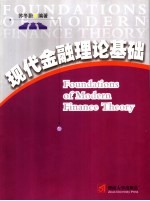
- 作 者:苏冬蔚编著
- 出 版 社:广州:暨南大学出版社
- 出版年份:2003
- ISBN:7810792717
- 标注页数:315 页
- PDF页数:325 页
请阅读订购服务说明与试读!
订购服务说明
1、本站所有的书默认都是PDF格式,该格式图书只能阅读和打印,不能再次编辑。
2、除分上下册或者多册的情况下,一般PDF页数一定要大于标注页数才建议下单购买。【本资源325 ≥315页】
图书下载及付费说明
1、所有的电子图书为PDF格式,支持电脑、手机、平板等各类电子设备阅读;可以任意拷贝文件到不同的阅读设备里进行阅读。
2、电子图书在提交订单后一般半小时内处理完成,最晚48小时内处理完成。(非工作日购买会延迟)
3、所有的电子图书都是原书直接扫描方式制作而成。
1 Understanding Financial Statements 1
1.1 Introduction 1
1.2 The Basic Accounting Statements 2
1.3 Measuring Asset Value 5
1.3.1 Accounting Principles on Asset Measurement 5
1.3.2 Asset Valuation 6
1.3.3 An Example of Asset Measurement 13
1.4 Measuring Liabilities and Equity 15
1.4.1 Accounting Principles on Liabilities and Equity Measurement 15
1.4.2 Liabilities and Equity Valuation 16
1.4.3 An Example of Liabilities and Equity Valuation 23
1.5 Measuring Earnings and Profitability 24
1.5.1 Accounting Principles on Earnings and Profitability Measurement 25
1.5.2 Measuring Accounting Earnings 26
1.5.3 Measuring Accounting Profitability 28
1.6 Measuring Risk 30
1.6.1 Accounting Principles on Risk Measurement 31
1.6.2 Accounting Measures of Risk 31
1.7 Summary 39
2 Understanding Risk 43
2.1 Introduction 43
2.2 Equity Risk and Expected Return 44
2.2.1 Defining Risk in Finance 44
2.2.2 Equity Risk 45
2.3 Diversifiable and Non-diversifiable Risk 49
2.3.1 The Components of Risk 50
2.3.2 A Simple Statistical Analysis of Diversification 52
2.3.3 Why A Marginal Investor Is Diversified 53
2.4 Models Measuring Market Risk 54
2.4.1 The Capital Asset Pricing Model (CAPM) 54
2.4.2 The Arbitrage Pricing Model (APM) 57
2.4.3 Multi-factor Models for Risk and Return 59
2.4.4 Regression or Proxy Models 60
2.4.5 A Comparison of Risk and Return Models 61
2.5 Models of Default Risk 64
2.5.1 The Determinants of Default Risk 65
2.5.2 Bond Ratings and Interest rates 66
2.6 Summary 69
2.7 Appendix:The New Definition of Risk 70
3 Theory of Investment Decisions 77
3.1 Introduction 77
3.2 Investment Decisions under Perfect Certainty 78
3.2.1 Consumption and Investment without Capital Markets 79
3.2.2 Consumption and Investment with Capital Markets 84
3.2.3 Transaction Costs and the Breakdown of Separation 90
3.3 Investment Decisions under Uncertainty 93
3.3.1 Uncertainty and State Preference Theory 94
3.3.2 Determinants of Security Prices 97
3.4 The Expected Utility Hypothesis 105
3.5 Optimal Investment and Portfolio Separation 107
3.6 Summary 111
3.7 Appendix:Creating Arrow-Debreu Securities 112
3.8 Appendix:Investors Attitude Towards Risk 115
4 Theory of Portfolio Choice 117
4.1 Introduction 117
4.2 Risk and Return for A Single Asset 118
4.2.1 Measures of Location 119
4.2.2 Measures of Dispersion 121
4.3 Measuring Portfolio Risk and Return 125
4.3.1 The Normal Distribution 126
4.3.2 Mean and Variance of A Two-asset Portfolio 127
4.3.3 Correlation Coefficient 131
4.3.4 The Minimum Variance Portfolio 133
4.3.5 Perfectly Correlated Assets 134
4.4 Optimal Portfolio Choice:Two Assets 137
4.3.6 The Minimum Variance Opportunity Set 137
4.4.1 Efficient Set with Two Risky Assets 138
4.4.2 Efficient Set with One Risky and One Risk-free Asset 141
4.5 Optimal Portfolio Choice:Many Assets 144
4.5.1 Mean-Variance Portfolio with n Risky Assets 144
4.5.2 Investment Opportunity Set with n Risky Assets 147
4.5.3 Two-fund Separation Theorem 149
4.5.4 Mean-Variance Portfolio with A Riskless Asset 151
4.6 Diversification and Individual Asset Risk 154
4.7 An Application:Cross Hedging 157
4.8 Summary 159
5 Equilibrium Asset Pricing Models 163
5.1 Introduction 163
5.2 Theoretical and Empirical Issues on CAPM 164
5.2.1 Efficiency of Market Portfolio 165
5.2.2 Derivation of CAPM 166
5.2.3 Properties of CAPM 170
5.2.4 Applications of CAPM 173
5.2.5 Empirical Tests of CAPM 178
5.3 Extensions of CAPM 181
5.3.1 No Riskless Asset 181
5.3.2 Returns Not Jointly Normal 184
5.3.3 Existence of Nonmarketable Assets 184
5.3.4 Existence of Heterogeneous Expectations and Taxes 185
5.4 Problem of Measuring Performance:Roll s Critique 186
5.5.1 Theoretical Foundation of APM 189
5.5 The Arbitrage Pricing Model 189
5.5.2 A Numerical Example of Arbitrage Pricing 198
5.5.3 Empirical Tests of APM 201
5.6 Summary 203
5.7 Appendix:Taking on Beta 204
6 Market Efficiency:Theory & Evidence 209
6.1 Introduction 209
6.2.1 What Is Efficient Market 211
6.2 Efficient Markets:Theoretical Explanations 211
6.2.2 Versions of Market Efficiency 212
6.2.3 Implications for Investment Policy 213
6.3 Empirical Tests of Market Efficiency 215
6.3.1 Event Study 217
6.3.2 Portfolio Study 224
6.3.3 Pitfalls in Testing for Market Efficiency 226
6.4 Empirical Evidence on Efficient Markets 228
6.4.1 Time Series Properties of Price Changes 229
6.4.2 Market Reaction to Information Events 238
6.4.3 Market Anomalies 244
6.4.4 Evidence on Insiders and Investment Professionals 255
6.5 Implications of Evidence on Market Efficiency 261
6.6 Summary 263
6.7 Appendix:The Grossman-Stiglitz Paradox 264
6.8 Appendix:Investment Newsletters 266
7.1 Introduction 271
7 Option Pricing:Theory & Applications 271
7.2 Basics on Option 272
7.2.1 Call and Put Options 272
7.2.2 Determinants of Option Value 274
7.2.3 American versus European Options 276
7.3 Option Pricing Models:The Binomial Approach 278
7.3.1 Creating A Replicating Portfolio 278
7.3.2 Binomial Option Valuation 279
7.4 The Black-Scholes Option Pricing Model 282
7.4.1 Implied Volatility and the Black-Scholes Model 282
7.4.2 Model Limitations and Fixes 285
7.4.3 Put-Call Parity and the Valuation of Puts 294
7.5 Extensions of Option Pricing 296
7.6 Summary 298
7.7 Appendix:Cox-Ross-Rubinstein Option Pricing 299
Bibliography 309
